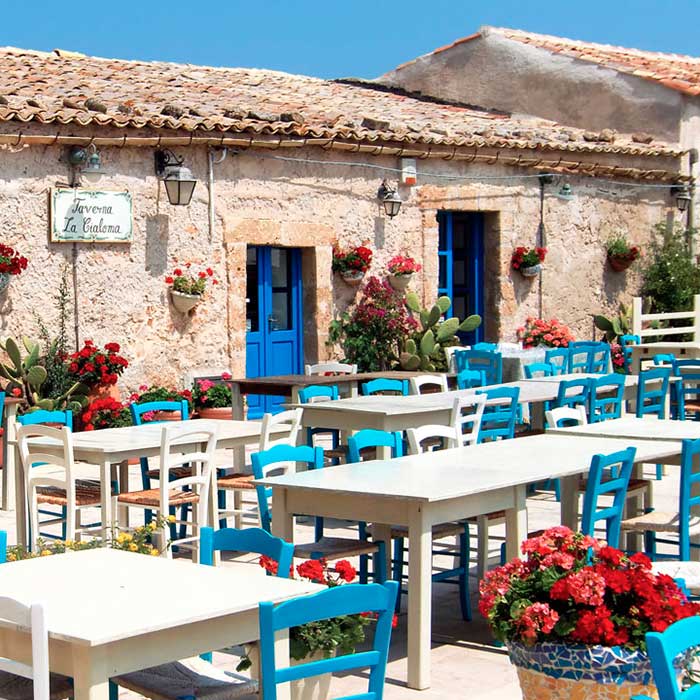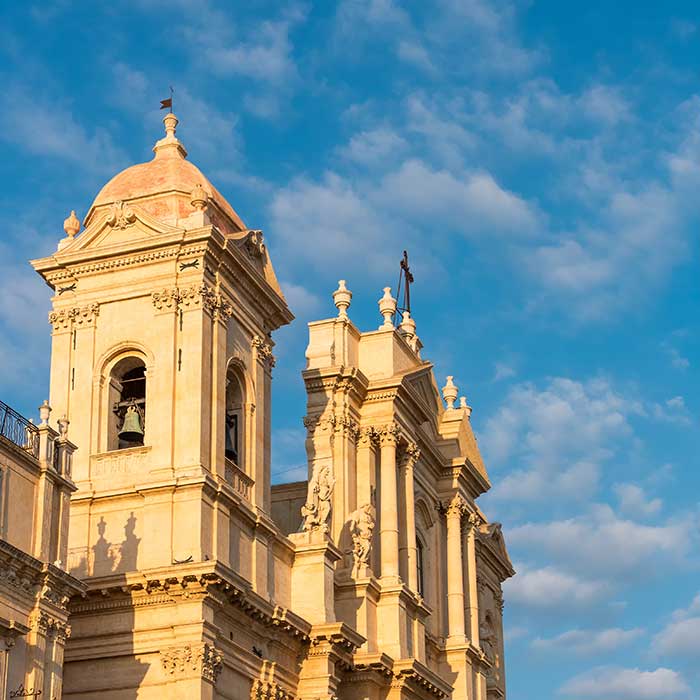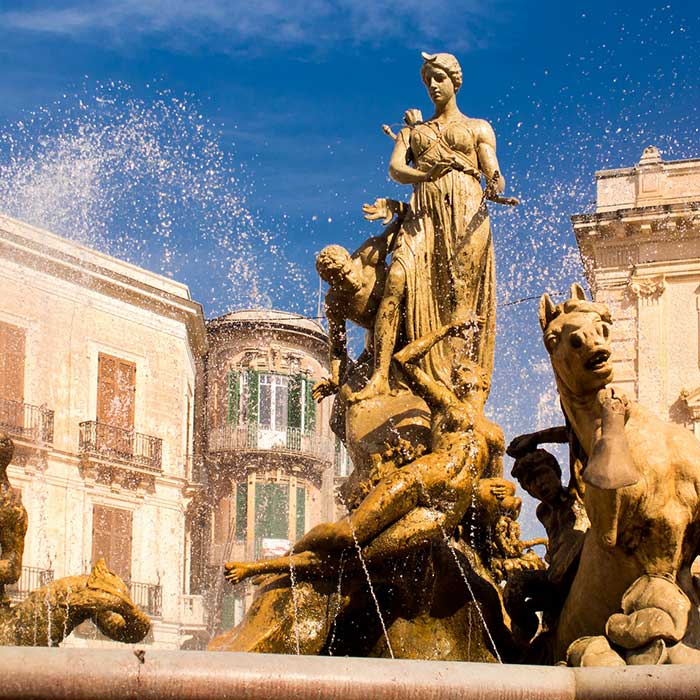What to visit in the surrounding areas
monuments and tourist attractions in the surroundings of our estateVendicari
between history and nature
Calamosche, better known by locals as “Funni Musca” is a sandy cove that stretches for about 200 meters, bounded by two rocky headlands that shelter it from the currents, with the result of a perpetually calm and crystalline sea.
A lovely natural swimming pool ideal for snorkeling. Swimming towards the cliff on either side of the gulf, where the bottom is deeper, caves, cavities and ravines harbor a varied marine fauna.
The direct access to this beach is guaranteed by a dedicated entrance, accessible from the SP19 road.
Marzamemi
Splendid city of the Sea
The Marzamemi tuna farm was the most important in eastern Sicily, as scholars Fabio Salerno and Salvo Sorbello point out, who reported in their books data relating to the catch of the seventeen tuna traps that were active along the eastern coast of Sicily. Indeed, according to D’Amico: this is the best Tonnara of the Kingdom and island of Sicily, (…) granting the richest and most abundant fishing. Already in 1558 the historian Tommaso Fazello wrote of Marzamemi as “a small number of ships. The sea abounds here of tuna and other marine fish, all good to eat “. In the tuna trap of Marzamemi two mattanze (tuna fishing expeditions) were carried out every day: one in the morning and one in the early afternoon.
Noto
Sicily and the Baroque
The streets of the city are interspersed with spectacular squares and imposing stairways that connect terraces and slopes. The unitary reconstruction produced a coherent urban fabric rich in architectural features. The tender local stone, with its golden to rosy color, was used and richly carved. The reconstruction took place together under the guidance of the Duke of Camastra, who represented the Spanish Viceroy in Noto. The Baroque of Noto pervades the entire city: the baroque elements are not isolated within an urban context characterized by different styles, but they are connected to each other in order to realize what has been called the “perfect baroque city”.
Modica
In the heart of Sicilian baroque
Modica boasts a rich repertoire of gastronomic specialties, the result of the contamination of the different cultures that dominated it; it is known above all for its production of the typical Aztec-derived chocolate. Its historic center, rebuilt following the devastating earthquake of 1693, is one of the most significant examples of late Baroque architecture and thanks to its masterpieces the city was included in 2002, together with other towns of the Val di Noto area, in the UNESCO World Heritage Sites list.
Syracuse
Greek city and seaport
Syracuse is a city on the Ionian coast of Sicily. It is known for its ruins of antiquity. The centrally-located Neapolis Archaeological Park encloses the Roman amphitheater, the Greek Theater and the Ear of Dionysius, a cave carved into the limestone in the shape of a human ear. The Paolo Orsi Regional Archaeological Museum exhibits terracotta artefacts, portraits from the Roman period and scenes from the Old Testament carved in white marble.





